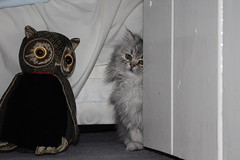Why companies should start thinking 2.0 and Social Networks
Posted On venerdì 22 gennaio 2010 at alle 14:56 by Marco RuggieroAt the beginning was internet: a place where consumers were searching for entertainment, trying to make a deal and chatting with friends.
Companies on their side were trying to pull people to their businesses using websites, some banners and using internet just as a small percentage of their advertising strategy integrating it with old media advertisements (TV, newspapers, specialists publications, etc…).
Something start changing 15 years ago: people were reporting about their lives on online diaries. They weren’t much different from a normal website, but evolving tools to ease the production and maintenance of Web articles posted in reverse chronological order made the publishing process feasible to a larger, less technical, population (source: wiki).
Since than web usage is gone further: the number of blogs has risen (175,000 new blogs every day in 2008) and have been created new forms of interaction : Micro-blogging (and twitter is one of the best examples) and tagging (in 2008 more than 30% of people have tagged or categorized content online).
Social network has been the next step: groups of people with similar interests who use social networking websites to communicate, interact and share contents. Facebook the most popular of them today.
In the new media marketing era User generated contents (UGC) are what consumers are looking for.
Some stats to understand the trend
Internet has reached in 2009 more than 6 billionsusers in the world, with a 26% of penetration in the world population. In Europe the growth of the internet population has been of about 300% between 2000 and 2009, with a penetration of 52%. British users are the 11% of the European users, with the 80% of penetration (data from: internetworldstats.com).
More than 30% of internet population use English as their first language online. Social networks and blogs are the 4th most popular online activities online, including beating personal email. 67% of global users visit member communities and 10% of all time spent on the internet is on social media sites (from clickymedia.co.uk).
These results have been achieved during 2009: before then communication via social networks was the fourth best activity, done by the 42% of the internet population. It took radio 38 years to reach 50 million listeners; terrestrial TV took 13 years to reach 50 million users; the internet took four years to reach 50 million people… In less than nine months, Facebook added 100 million users. If Facebook were a country it would be the third most populated place in the world. Twitter had about 5 Million unique visitors in December 2008 and one year after has reached almost 25 Million visitors. Online users like to spend their time on contents, such as blogs, and social networks and their number is increasing with astonishing rates.
Implications of the Changes
In 1999 Rick Levine, Christopher Locke, Doc Searls, and David Weinberger wrote the Cluetrain Manifesto: the authors assert that the Internet is unlike the ordinary media used in mass marketing as it enables people to have "human to human" conversations, which have the potential to transform traditional business practices radically (source: wiki). Companies who haven’t understood this and still talk about targets, missions and segments are going to die. People already talk about them, take joke of them, link them, they don’t wait. If companies want to catch the new acknowledgement of people they have to let humans talk, not fake a human voice: "A powerful global conversation has begun. Through the Internet, people are discovering and inventing new ways to share relevant knowledge with blinding speed. As a direct result, markets are getting smarter—and getting smarter faster than most companies” (from The Cluetrain Manifesto). As proof of the right foresight a Nielsen survey in July 2009, the biggest of its kind (25,000 Internet consumers from 50 countries). has “revealed” that recommendations by personal acquaintances and opinions posted by consumers online are the most trusted forms of advertising globally.
As well brand websites – the most trusted form of advertiser-led advertising – are trusted by as many people (70 percent) as consumer opinions posted online (source: Nielsen Global Online Consumer Survey – London, April 2009- pdf).



